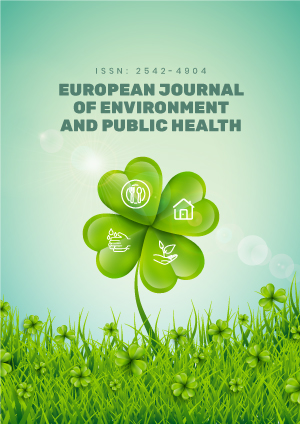Abstract
Objective: Radiation workers in nuclear Medicine institute are handling unsealed radioactive materials for diagnostic and therapeutic procedures of patients and thus radiation hazard on workers and public health in nuclear medicine is high comparing to other departments of the hospital. The purpose of the study is to evaluate the radiation hazard on workers and public at the indoor places of the Institute of Nuclear Medicine & Allied Sciences (INMAS) Mitford, Sir Salimullah Medical College and Hospital Campus based on the real-time radiation monitoring data. Methods: The radiation monitoring was performed using a real-time portable digital radiation monitoring device. This real-time digital portable radiation monitoring device meets all European CE standards as well as the American “FCC 15 standard”. The portable digital radiation monitoring device was placed at 1 meter above the ground on tripod and data acquisition time for each monitoring point (MP) was 1 hour. 24 MPs were selected for collection of radiation dose rates at different indoor locations of INMAS, Mitford hospital from May-June 2019. The real-time dose rate also monitored at 1 meter distance from injected patients in the patient’s waiting room after injecting 99mTc & 131I. Results: The measured dose rates were ranged from 0.181 ± 0.057 μSv.h-1 to 2.247 ± 0.685 μSv.h-1 with an average of 0.463 ± 0.695 μSv.h-1. The annual effective dose to the radiation worker and public were varied from 0.279 ± 0.089 mSv to 3.481±1.061 mSv with an average of 0.717 ±1.077mSv. Excess life-time cancer risk (ELCR) of worker and public were evaluated based on annual effective dose and varied from 1.113 Χ 10-3 to 1.385 Χ 10-2. Conclusion: Real-time radiation monitoring at indoor places of nuclear medicine facilities are required for detection of contamination in the workplace. So this study is needed to keep the indoor environment free from radiation hazard and thereby improving the worker and public health.
License
This is an open access article distributed under the Creative Commons Attribution License which permits unrestricted use, distribution, and reproduction in any medium, provided the original work is properly cited.
Article Type: Research Article
EUR J ENV PUBLIC HLT, Volume 5, Issue 1, 2021, Article No: em0061
https://doi.org/10.29333/ejeph/8576
Publication date: 07 Oct 2020
Article Views: 4376
Article Downloads: 2746
Open Access References How to cite this article
 Full Text (PDF)
Full Text (PDF)